Erin Fletcher : Fine Binding & Edition Binding

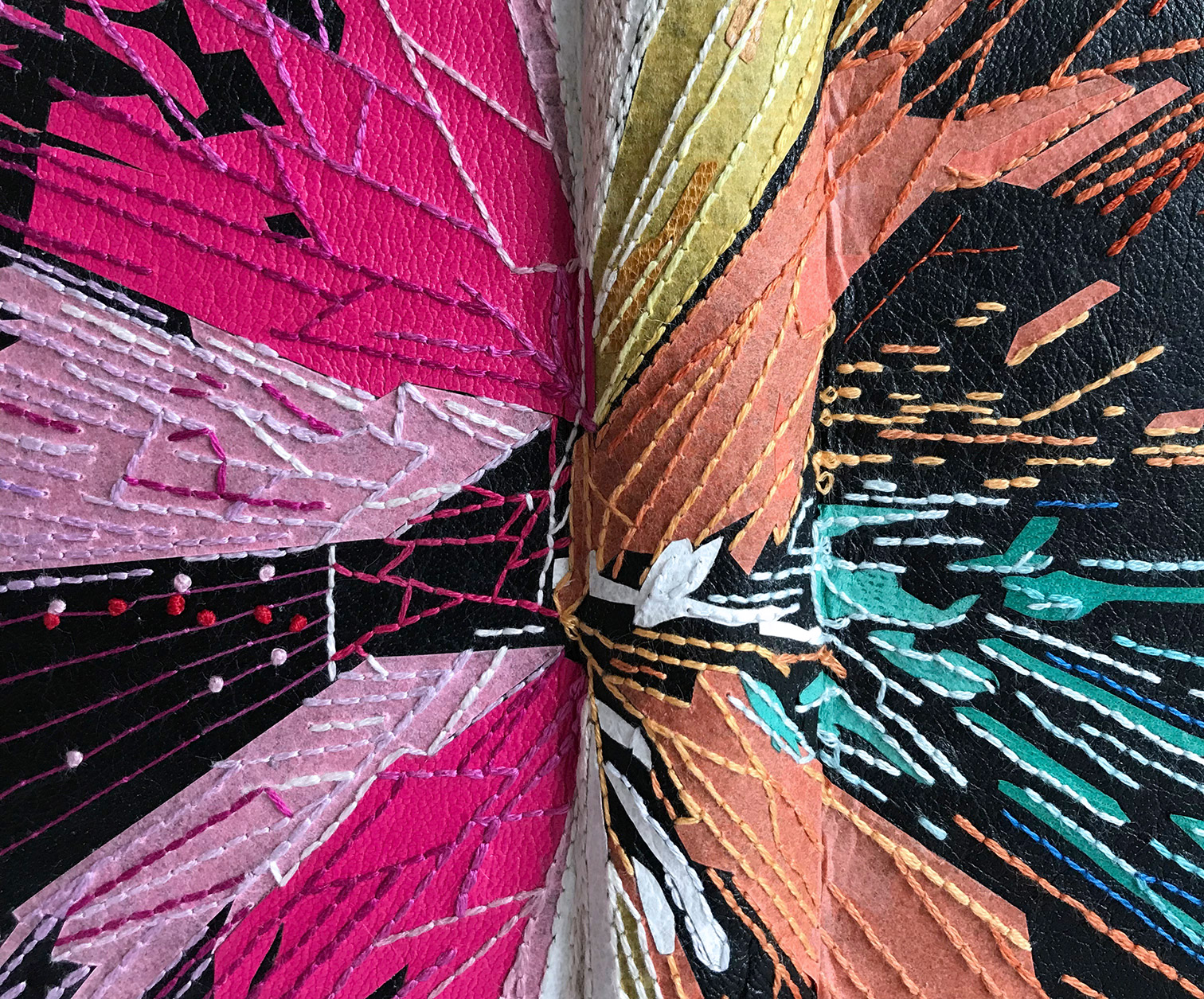
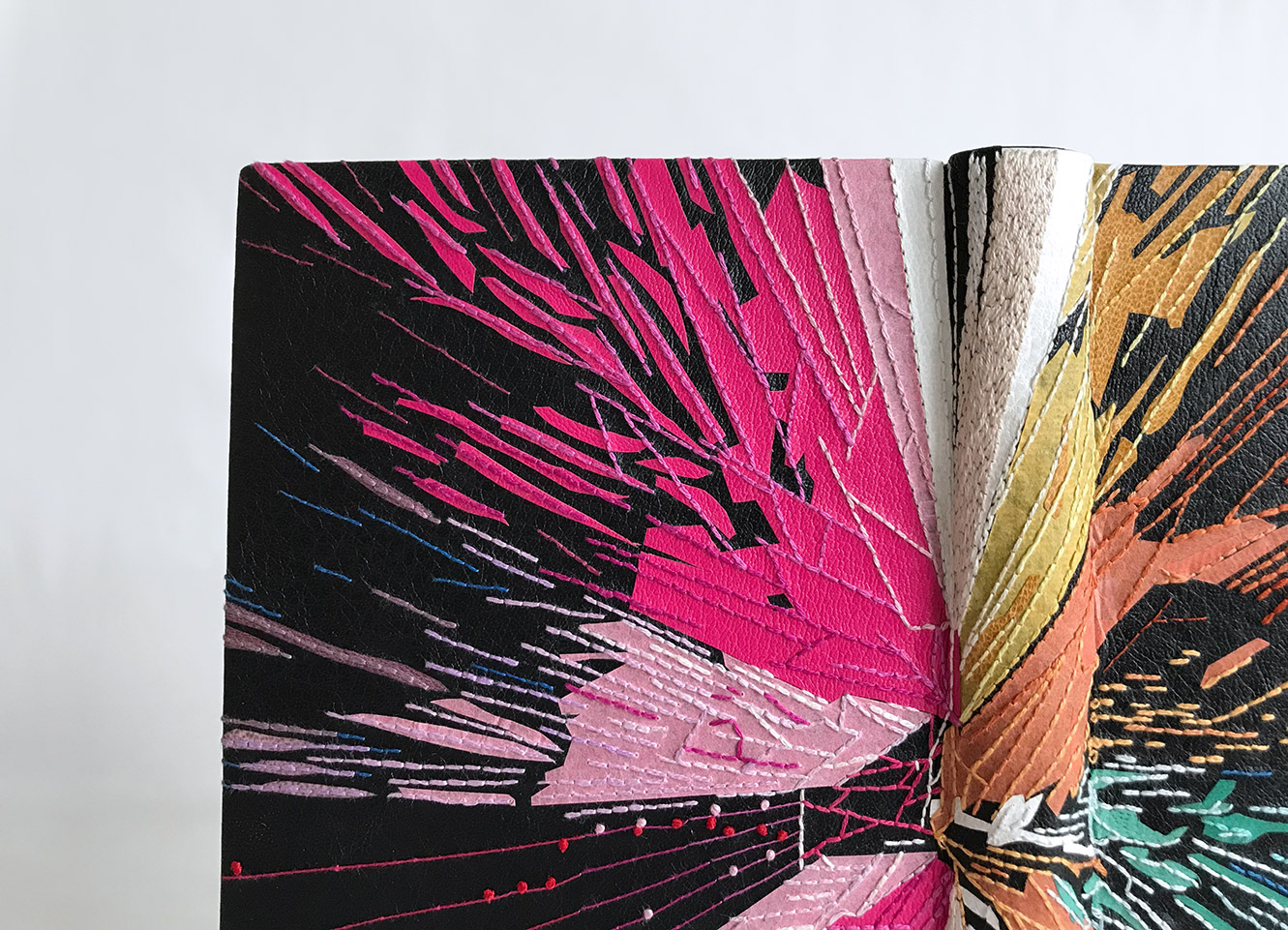
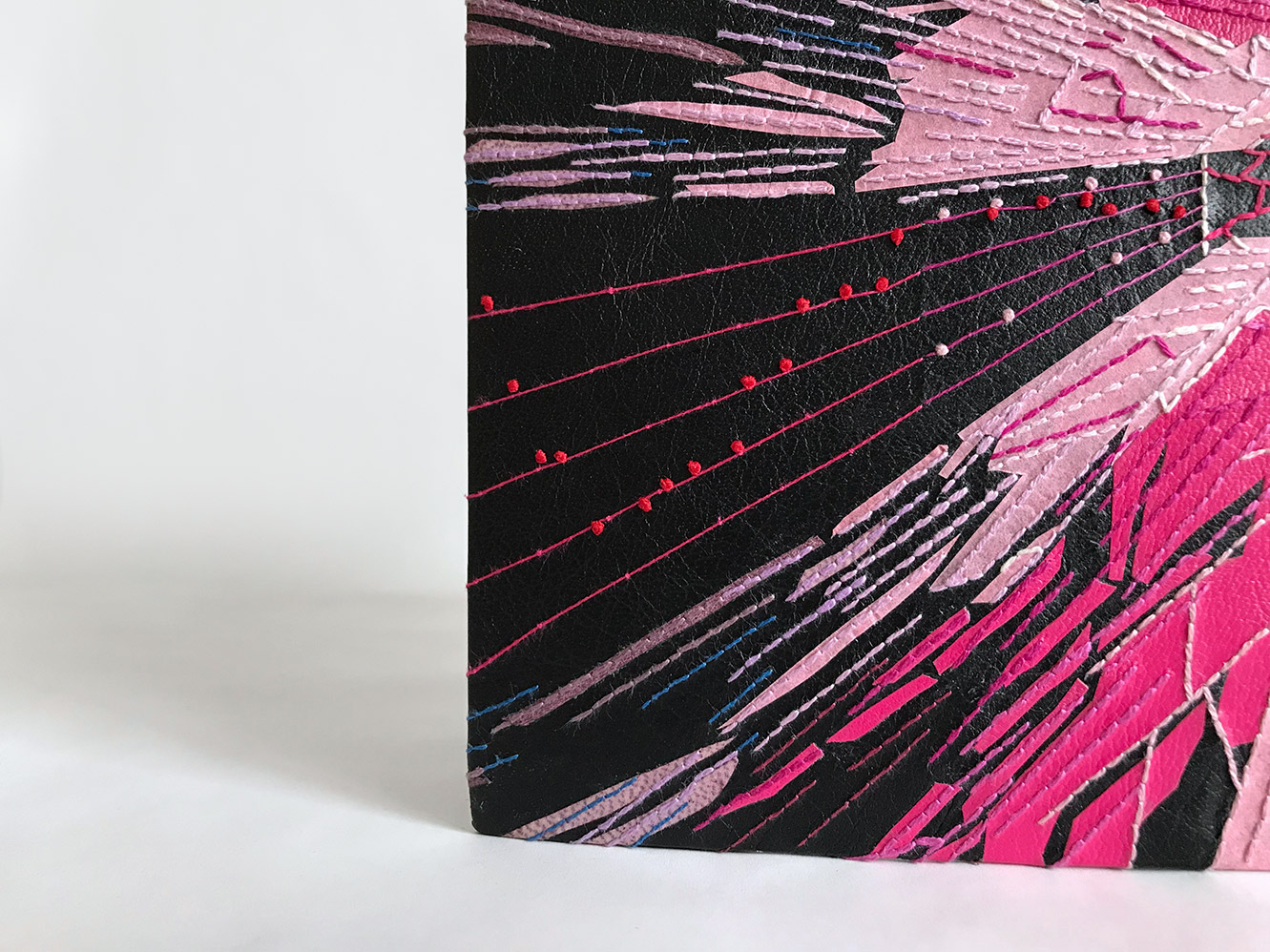
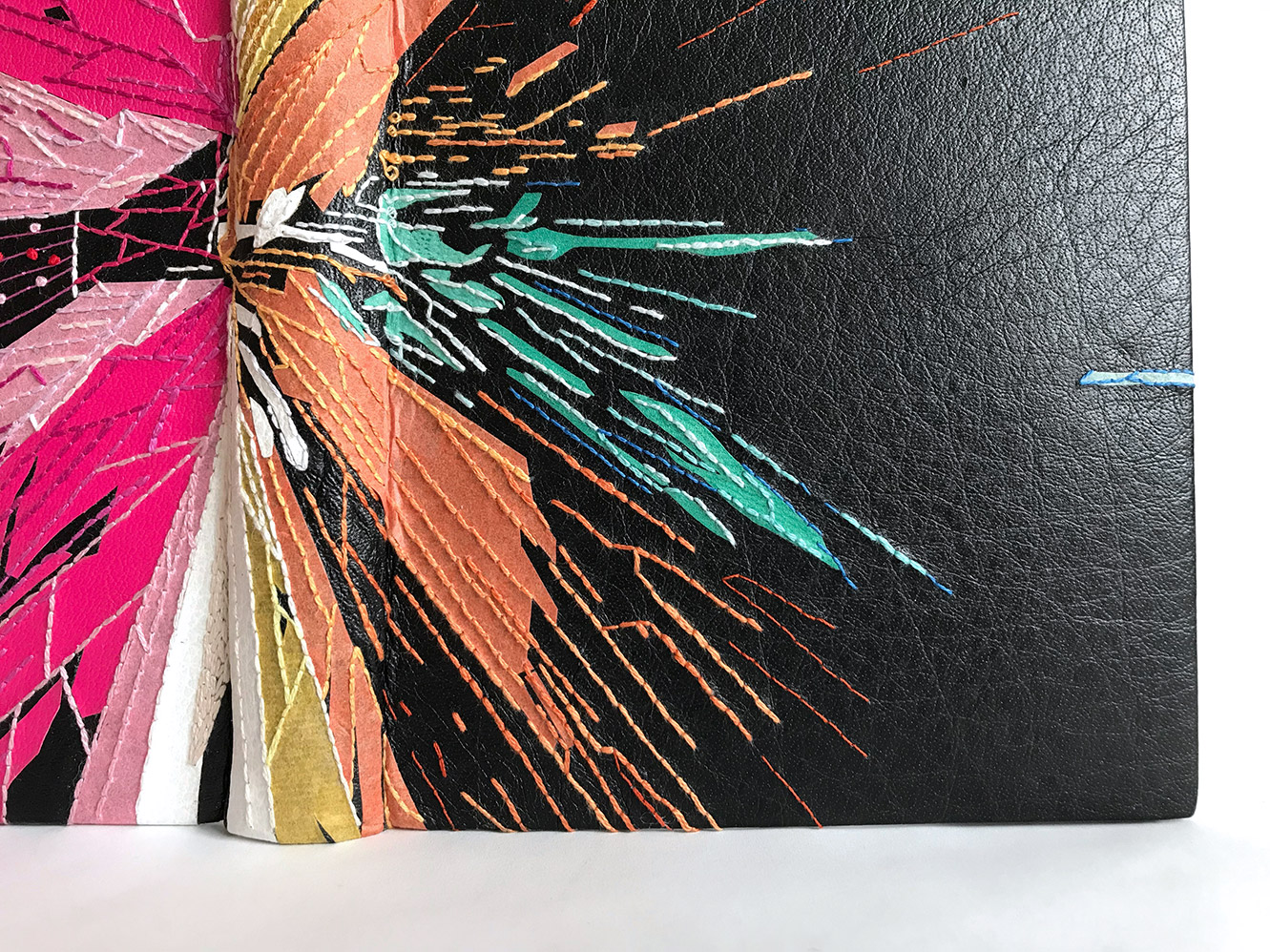
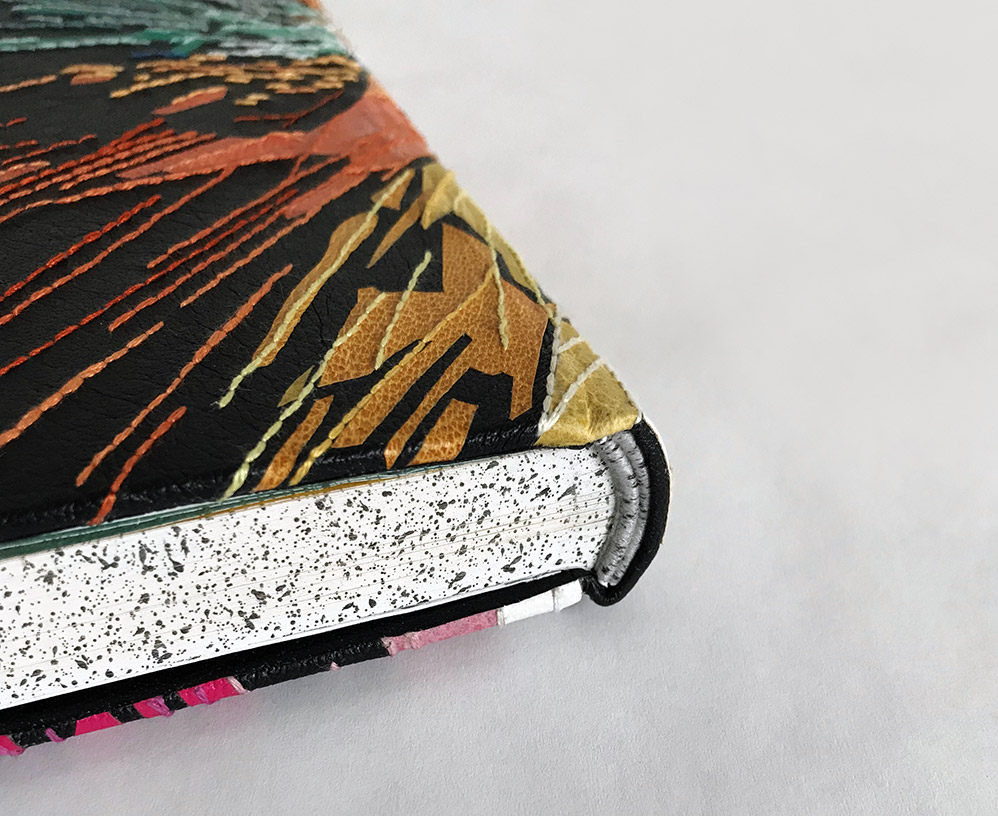
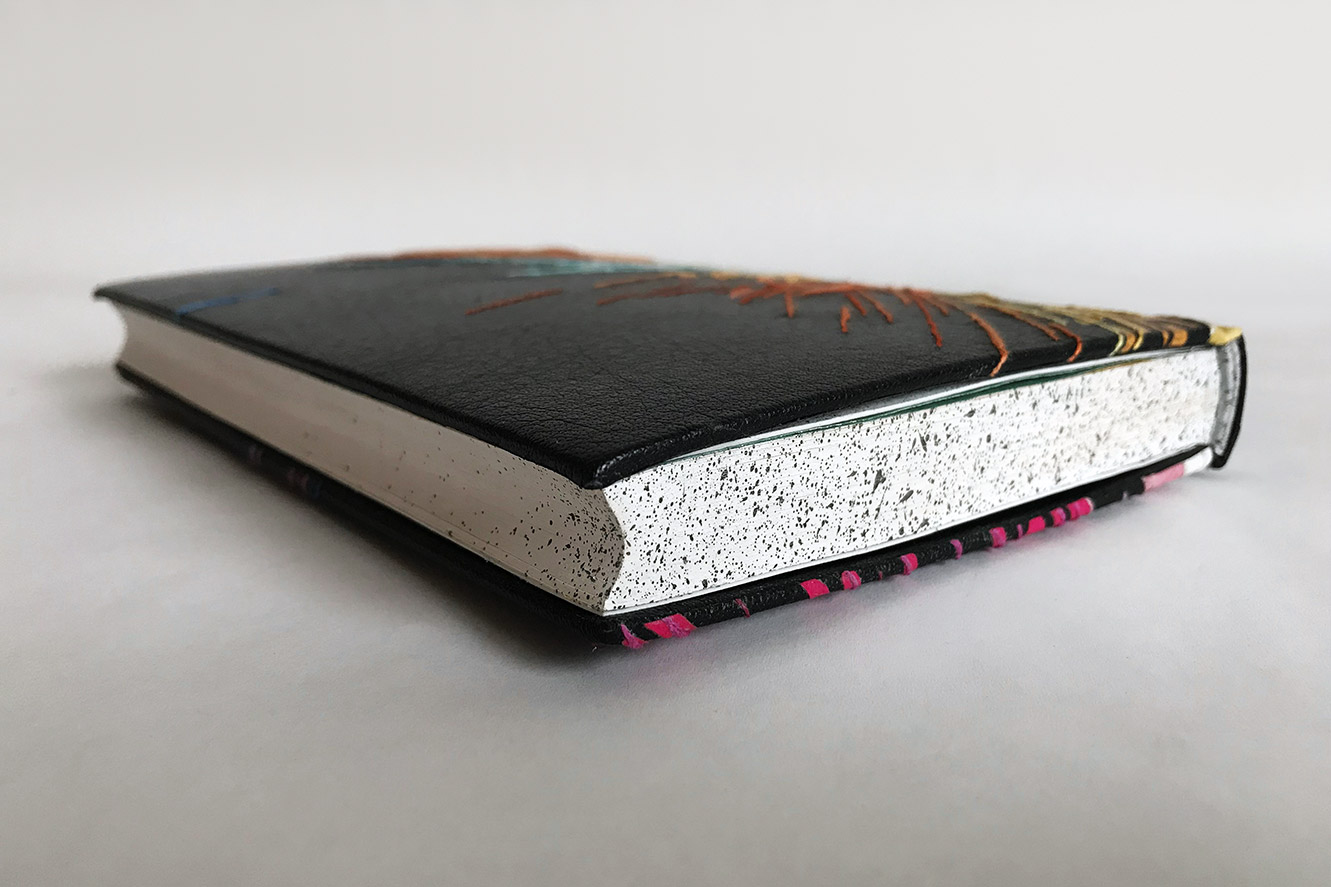


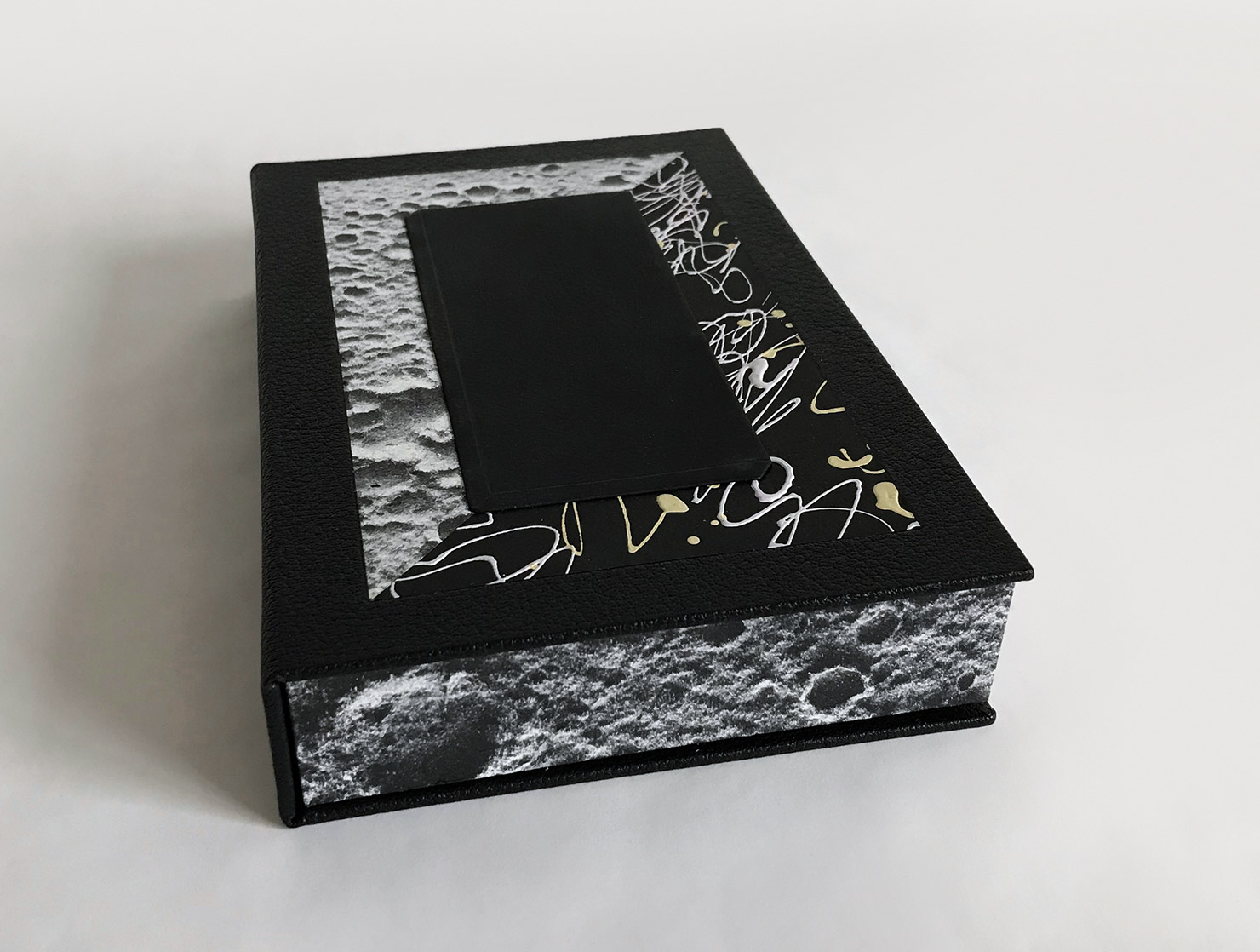
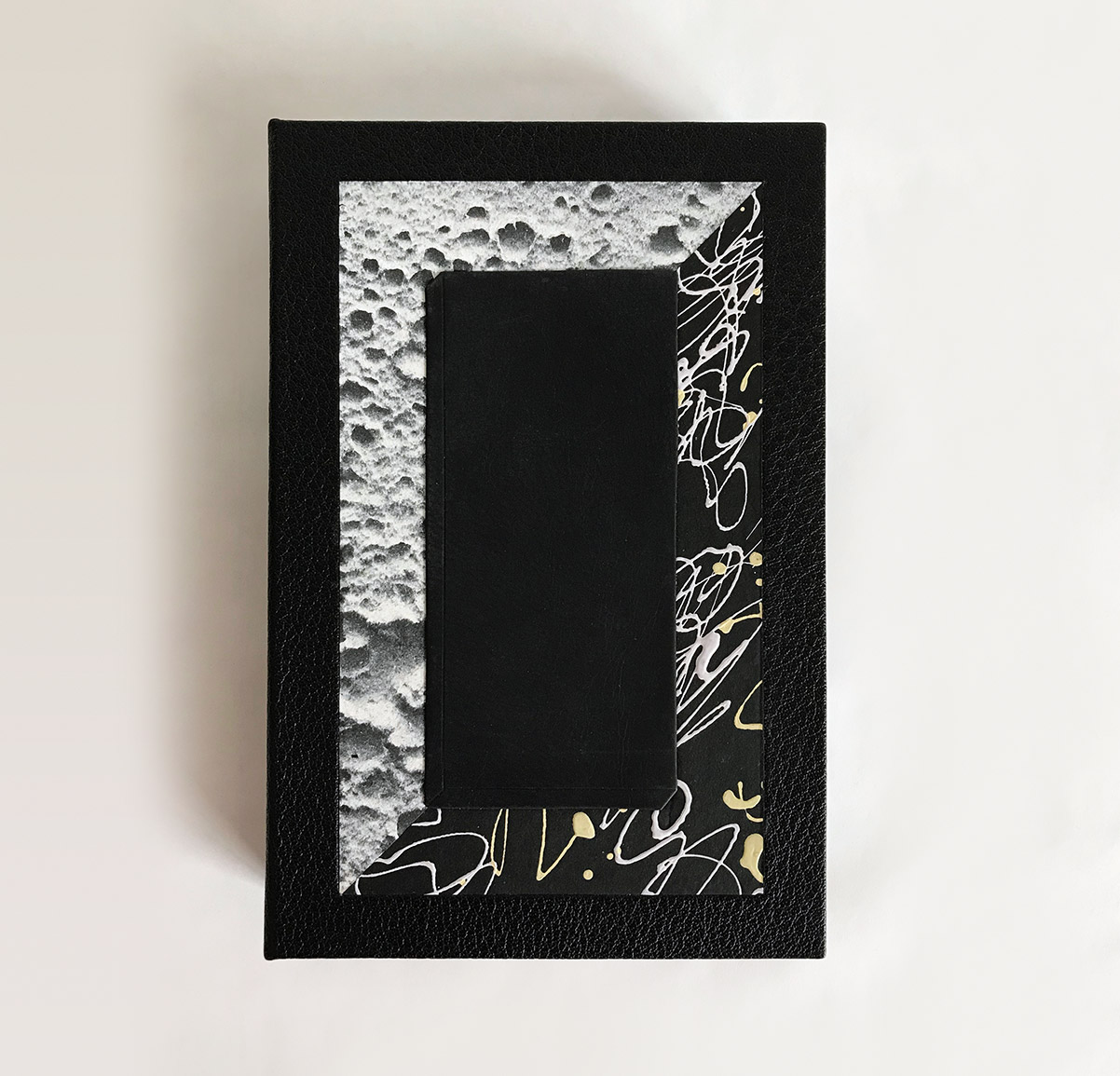

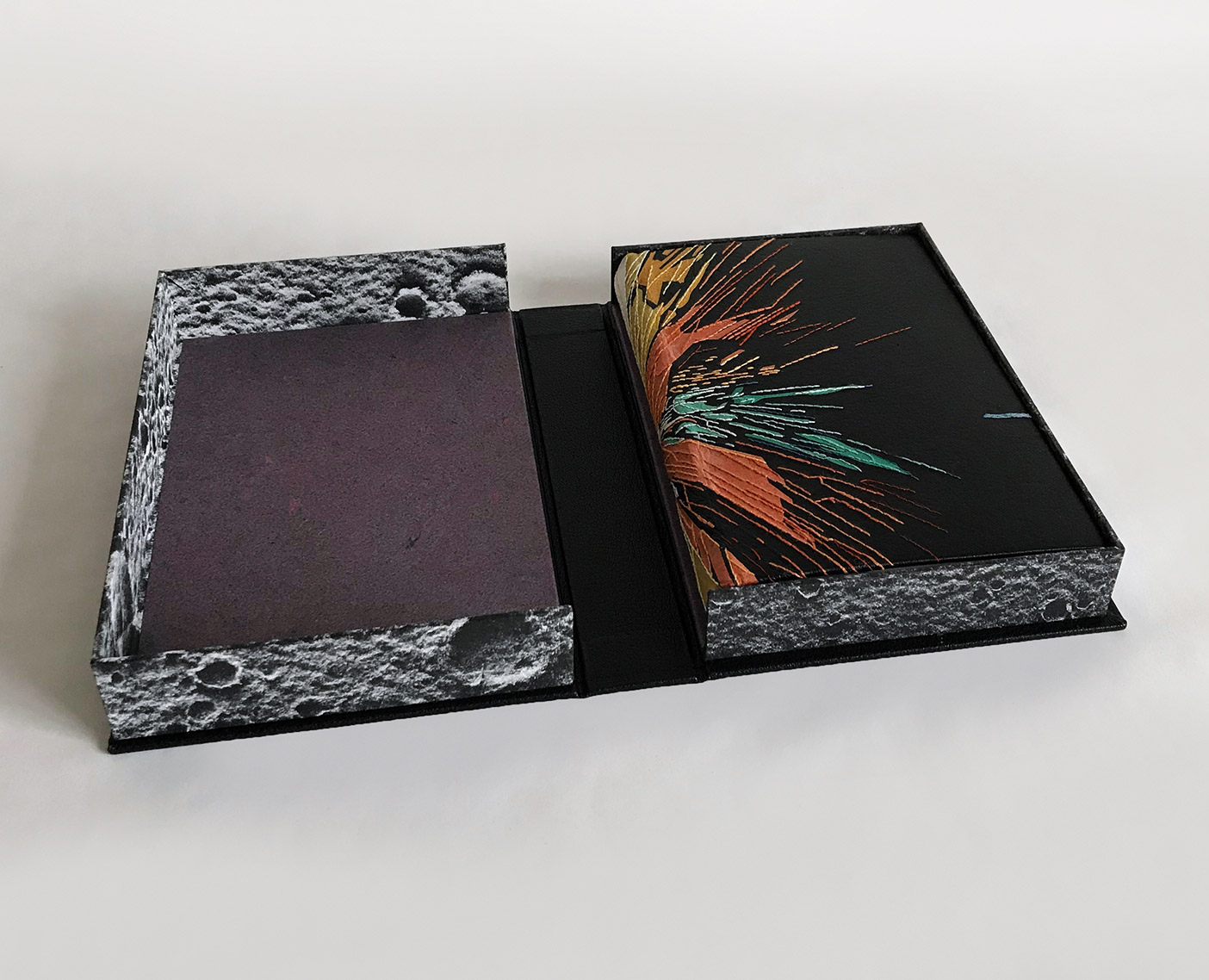





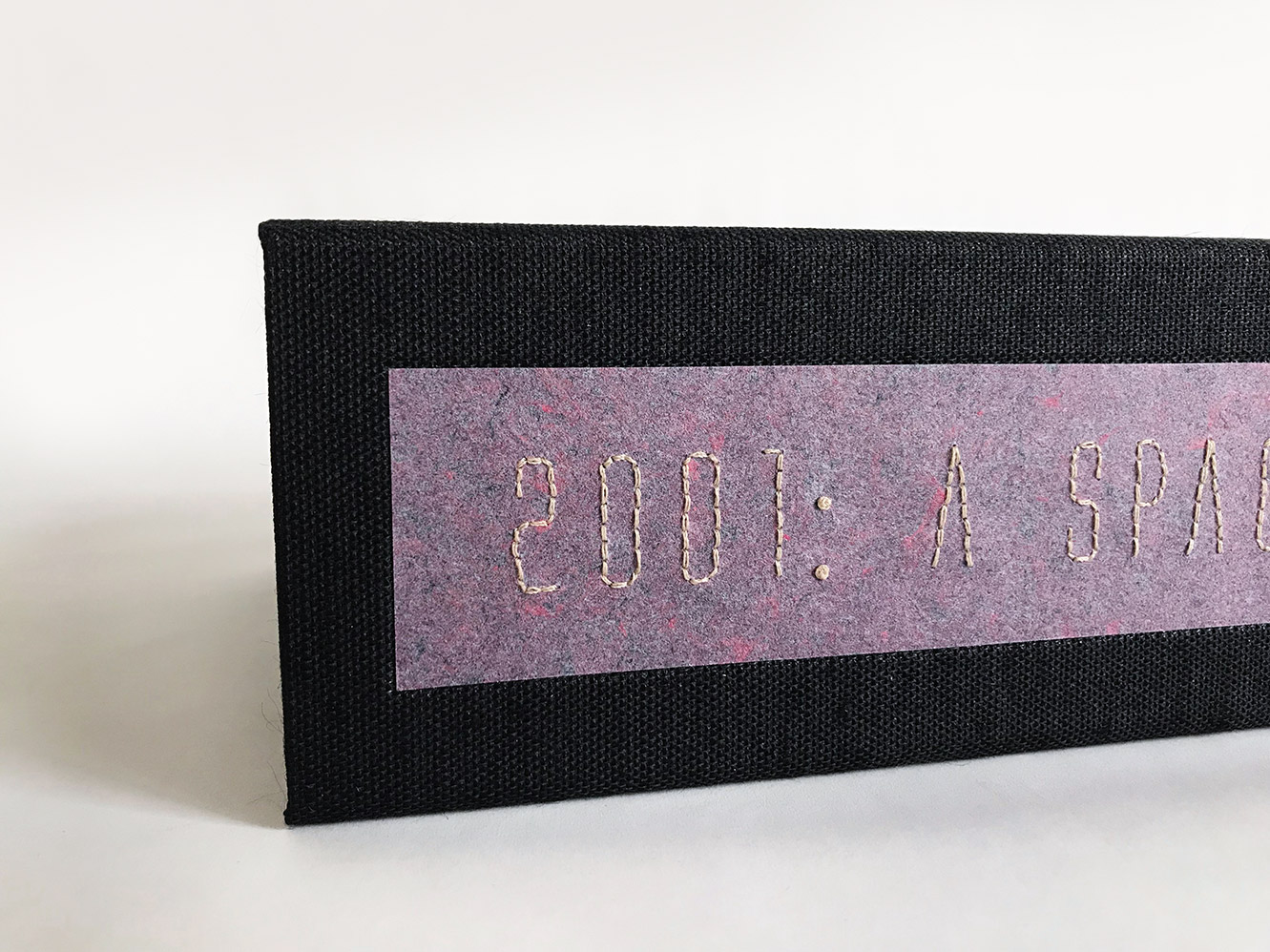
2001: A Space Odyssey - by Arthur C. Clarke
The New American Library, Inc., 1968
Private Collection, US
French-style fine binding with laced-in boards. Bound in black buffalo skin with back-pared onlays in white, yellow and fuchsia goatskin, teal and lilac suede and yellow, orange, teal and light pink kozo paper. Onlays are embellished with embroidered cotton floss. Edges decorated with brushed-on white gouache and sprinkled with black gouache. Hand-sewn double core French endbands in cotton embroidery floss. Headband sprinkled with black gouache. Matching edge-to-edge doublures with inlay of black calfskin, which is blind tooled. Flyleaves made by the binder to match edge decoration. Endpapers include a cropped printed image of a Van Gogh and Wyeth painting with handmade kozo paper in teal and yellow.
Book is housed in a clamshell box covered with black buffalo skin with onlays of handmade moon paper and scribble paper. Center onlay is covered in black calfskin and blind tooled. Trays covered in handmade moon paper and lined with handmade mottled purple paper. Box is wrapped in handmade olive colored paper with coyote foot bone.
20.7cm x 14cm x 2.5cm – Completed in 2019
Exhibition History
- Exhibited in 2018 North Bennet Street School Student & Alumni Show
Artist Statement
The tale of 2001: A Space Odyssey was a collaboration between Arthur C. Clarke and Stanley Kubrick. Therefore the design takes cues from both the text and the film as a nod to this collaboration.
Clarke divides his epic telling of human evolution into six parts. For my binding of this novel, I wanted to recreate each part as a tactile experience while the viewer moves through the enclosures and into the binding.
Beginning with the earth-toned wrapper, which includes a bone to signify the discovery of tools and how they might benefit as weaponry. Peeling away the wrapper reveals the clamshell box and the moment in the story when the mysterious monolith is unearthed by modern man on the moon.
The design of the binding illustrates the “star streaks” experienced by both the protagonist from the text, Dave, and viewers of Kubrick’s film. Musical notations from Verdi’s Requiem Mass “Dies Irae” are stitched on the back cover to highlight the bleakness Dave felt once the ship’s life support, HAL, murdered his entire crew and attempted to do away with him as well.
In an attempt to save himself, Dave flees from the empty ship and enters the final stages of his evolution. This is communicated by the interior side of the boards, flyleaves, edge decoration and endpapers. In his escape pod, Dave enters a space with gaping black shafts filled with squares, triangles and polygons before emerging into a white space peppered with a myriad of tiny black specks overhead. Dave ends this portion of his journey in a room where the objects seem familiar but at closer inspection deemed poor replicas. Dave calls out how two paintings hung on the walls are quite blurry yet recognizable. These two paintings are Van Gogh’s Bridge of Arles and Wyeth’s Christina’s World. I altered and cropped these paintings for the endpapers to be the final visual representation of the book before getting to the actual text.
